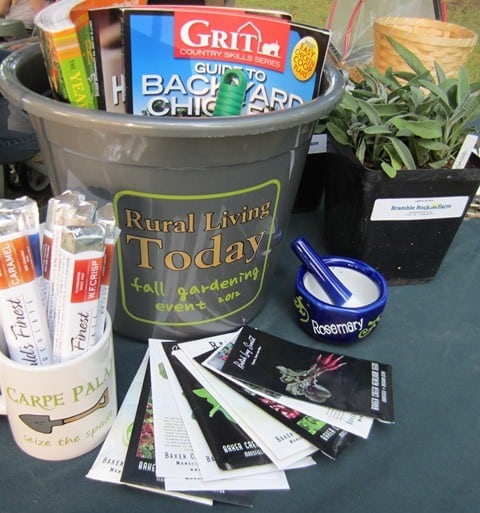Having the best greenhouse equipment and greenhouse accessories can be pivotal to managing a greenhouse efficiently. Your options will depend on the type of greenhouse you own. Larger greenhouses will give you more space for ventilation, irrigation, and lighting options.
For example, if you own a walk-in greenhouse, you may have the option to install greenhouse equipment including irrigation, grow lights, and extra ventilation.
For a mini greenhouse that can sit on a patio, you may only need greenhouse accessories such as a moisture meter and soil sample testing kits.
Let’s look at what are the best greenhouse equipment and supplies to consider when starting greenhouse gardening.
Best greenhouse equipment
The reason you have a greenhouse is to be able to grow plants no matter the climate or conditions. There is equipment that will enable you to do that.
These include being able to control the inside temperature and humidity levels. You may want to consider having access to water inside for irrigation or to make watering more convenient.
Remember, the larger your greenhouse, the more you can do with grow lights, storage for greenhouse tools, setting up a variety of plants, etc.
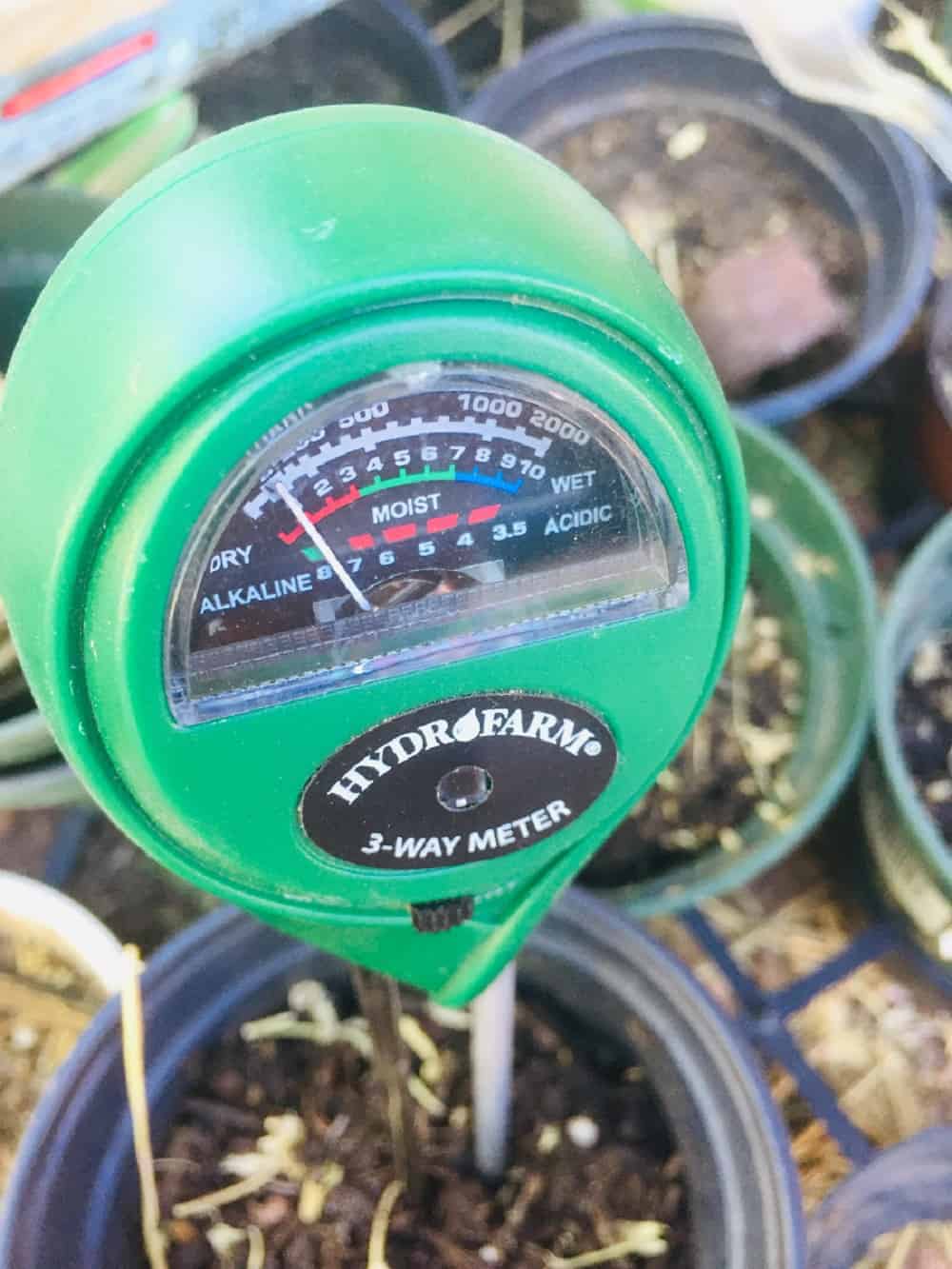
Types of greenhouse accessories
One of the best greenhouse accessories to consider are heavy planters. Keep them on the ground in the greenhouse near the walls. Their weight will help secure the greenhouse in wind. You want to be sure to not keep heavy pots on greenhouse shelves during inclement weather, including rainstorms.
No matter what size greenhouse you plan to own, you will also want to consider these greenhouse accessories.
- Basics
- Potting soil
- Seed starters
- Planters, pots, tray
- Watering can
- Moisture meter, light meter
- pH and soil test kits
- Greenhouse furniture – for walk-in models
Types of greenhouse equipment
- Water management — Irrigation and drainage, sink or hose access
- Lighting
- Climate control and heating
- Ventilation
- Pest control
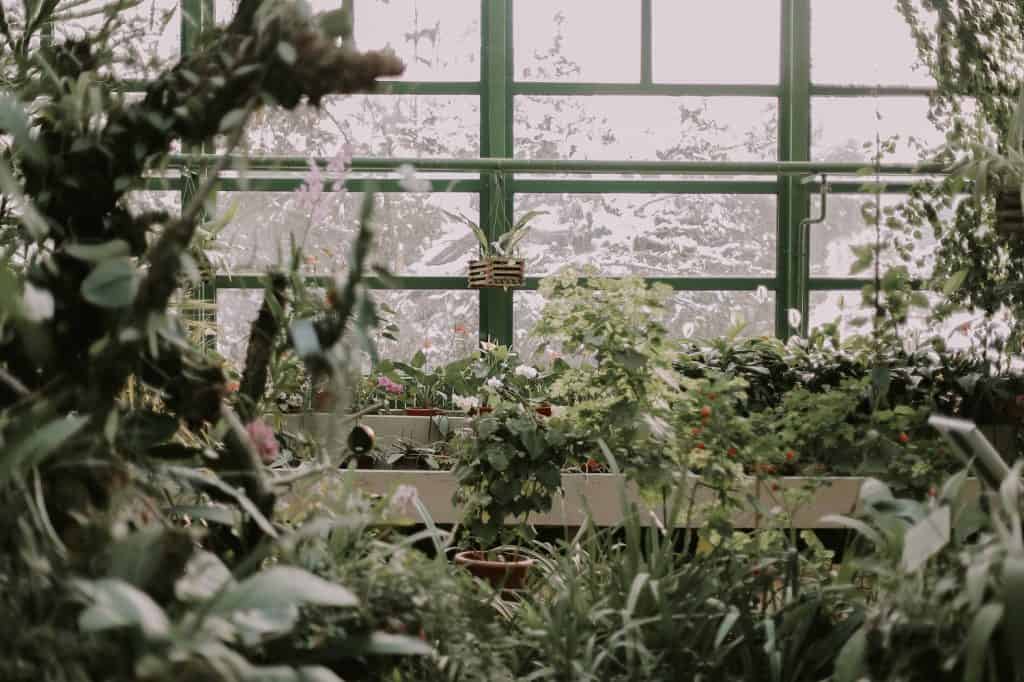
Each one of these components need to be planned for when constructing greenhouses. As you read on, I’ll discuss the various items that come in each category.
Basic greenhouse accessories
When you begin your gardening hobby, you need basic accessories. Perhaps not an entire greenhouse, but definitely seeds, pots and trays.
When it comes to greenhouse accessories, there are things you will need no matter what.
If you don’t have these already, read below for the greenhouse accessories to consider. If you do have them already, scroll down to learn about greenhouse equipment.
Here are the basic things you need to start growing plants.
Greenhouse containers
Your choice of greenhouse containers and nursery pots is crucial because it will have a large effect on how your vegetables or plants grow.
For greenhouse planters, gardeners can use almost anything that grips soil as long as it meets these meets two criteria. They should:
- Promote good health, giving plenty of space for roots and providing excellent drainage.
- Hold the crop well and stabilize its upward growth.
There are many varieties of containers like flats and plugs, hanging baskets and pots. There are also larger containers that are equipped to hold various smaller pots.
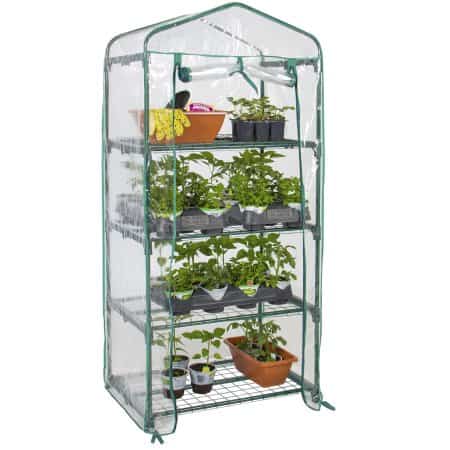
Hanging baskets are perfect for growing plants, flowers and vegetables in height while making perfect use of space. They can be made from plastic, metal ceramic or even coconut fiber. Plugs and flat containers are used frequently for early germination purposes.
These containers are available to hold various small plants or flowers while keeping them separated.
As for potting, gardeners prefer greenhouse pots made from clay because they are the traditional way of growing the flowers and plants.
However, if you cannot buy clay pots, you can consider materials like plastic, wood, peat moss and wood fiber as well. These are often lighter in weight, more durable and cheaper than clay pots. They are easily disposable as well.
Seed boxes
Seed boxes are also considered to be essential greenhouse equipment. Plastic seed boxes are taking over from the wood boxes that many growers used in the past.
There are pros and cons of plastic vs. wood. If you want to go green, cut the plastic option and stay with wood.
Get seed boxes that are around 14 inches X 8 inches X 2 inches. This is the perfect size to start seeds.
Choosing nursery and greenhouse pots and containers
Soil in porous greenhouse containers can dry out quickly, and you’ll have to water more frequently. In non-porous containers, the soil tends to grip moisture better, averting over-watering.
When you’re choosing greenhouse pots and containers, bear in mind that they should do more than satisfy a plant’s growth needs; they should also have good drainage and porosity.
Generally, if you’re planning for year-round crops, you’ll need to plan for mobility. Your greenhouse pots should be easily movable and lightweight.
You’ll need to be certain that your containers are eco-friendly, which will, in turn, allow for a possible environment for your plant.
Starting with proper greenhouse pots and supplies can help germinate from seeds even when the soil is not compatible for germination.
Choosing the right type of greenhouse container will make a large difference in the overall development of your greenhouse plants.
Heavy pots
You will also want to consider the weight of your nursery pots. You want lightweight pots on greenhouse shelves. Using heavier pots on the ground toward the greenhouse walls will help to secure the greenhouse in wind.
With a walk-in greenhouse, you will stake it down or use something such as cinder blocks to keep it securely in place. Adding heavy pots can also help. Be sure to keep heavy pots on the ground and not on greenhouse shelves to minimize breaking.
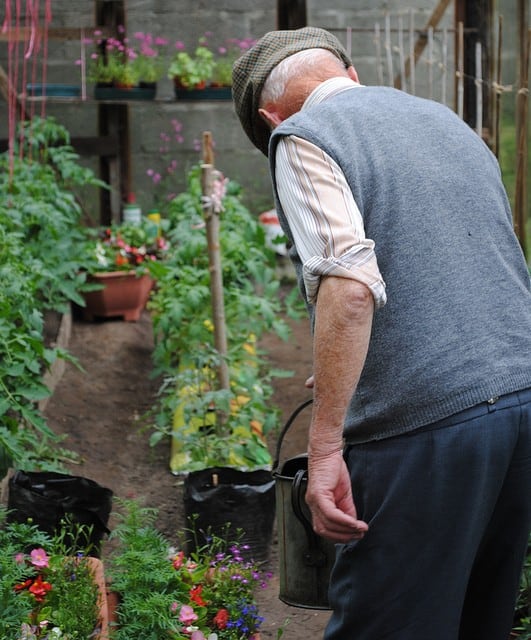
Watering can
You may want to consider a watering can as well as a greenhouse plant mister as well. These accessories will make it easy to water plants. Having a watering can with a narrow spout will help keep the soil from moving around. You can buy one in plastic or metal.
Plastic cans are generally lighter which makes watering less labor-intensive. Plus, they are often cheaper.
A small sprayer will help you mist plants for added moisture. Whether or not you plan for a greenhouse watering system, you should have these accessories.
Moisture meter
Another simple greenhouse accessory is a moisture and light meter. This is a tool you stick in the soil to read the plant’s moisture level. You can change the setting to measure the light.
What’s nice about these easy-to-use meters is you can find one that tests light, moisture, and the pH of the soil.
Soil test kits
If you find a plant is struggling or not looking as healthy as it once way, you can test the soil. You can easily get a soil test kit to test for Nitrogen, Phosphorous, and Potash (NPK). These kits are easy to do and provide accurate readings for what the soil may be lacking.
Furniture to store your greenhouse equipment and plants
Well-planned furniture and adequate shelving inside a greenhouse will hold all your pots and containers.
Greenhouse shelves
In a small greenhouse structure with limited space, shelving can boost the growing area without any negative impacts on shade. Some greenhouse shelves are mobile (with wheels) and can be moved outside during ideal weather and then back inside at night or during cold temperatures.
Shelves may be created from materials such as glass, wood or metal.
It is important to remember that if double shelving is used, the amount of lighting reaching plants may be affected.
To save space, you can also locate shelves beneath garden benches. Greenhouse shelving can be temporary for starting seedlings or permanent, attached to the greenhouse structure.
Cinder, wood blocks and metal are ideal for the legs and stands of the shelves.
The wire meshes of the shelves enable excess water to drain off. Greenhouse shelving can also help keep crops separated to prevent seeding or cross-pollination.
Garden bench greenhouse storage accessory
Garden benches are one form of shelving that allows for maximum space and storage. Their ideal size is generally determined by the width of the hothouse in order to optimize growing space.
Benches may be permanent fixtures or temporary ones making it a versatile greenhouse accessory. If you intend to regularly remove or rearrange them, then sectioned bench options may be good for you. Greenhouse benches add a lot to a greenhouse.
Planters for greenhouse storage
Planters are another type of greenhouse accessory for gardening. You can use heavy-duty planters and nursery pots to hold greenhouse tools such as gardening gloves, shovels, rakes, hoes, and spades.
You can use heavy planters made from clay, ceramic, etc. to hold them securely and make them convenient to access.
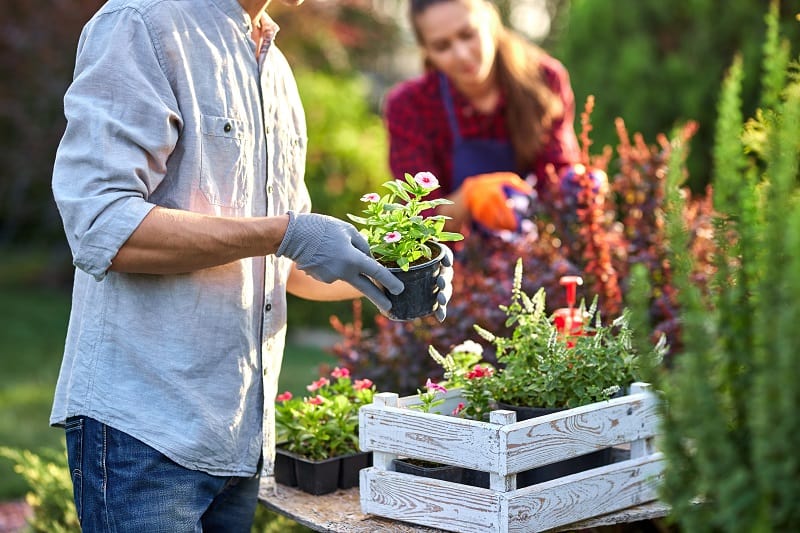
Greenhouse irrigation and drainage equipment
If you have a walk-in greenhouse, you may consider setting up a greenhouse watering system. Irrigation systems are ideal to help nurture your plants, and they save you time.
You can DIY irrigation system or buy an irrigation kit for greenhouses.
Irrigation systems will make it convenient as you can change the system at any time, depending on the season and the plants’ needs.
You can set your greenhouse up on a drip irrigation system which would provide ongoing water or a system that you set to water once a day or less frequently.
While automatic watering systems are convenient, there will always be a special place in traditional gardening for good old watering cans.
The long spouts on the cans will easily reach all of your plants even at the back of the flower bed.
Greenhouse water management
With an irrigation system, you’ll also be able to customize your watering experience based on what each individual bed needs.
Best Retractable Garden Hose Reels
Rain chains
Another very nice design touch are rain chains. If your greenhouse has gutters, you can add rain chains to help manage the water surrounding the greenhouse to help erosion.
Greenhouse gutters
In addition, you can install gutters if your greenhouse doesn’t have them.
Cistern
From there, you can add a water harvesting cistern to capture rainwater from the greenhouse.
Greenhouse self-watering system
Create a trickle watering system with a plastic hose that has outlet nozzles at different intervals throughout its length. Set the hose along your pots at an appropriate proximity.
Connect your hose to a storage tank that fills consistently and releases water whenever it is full. What’s great about a self-watering system is it will water your pots or beds in the exact quantities you desire, at the exact time every day.
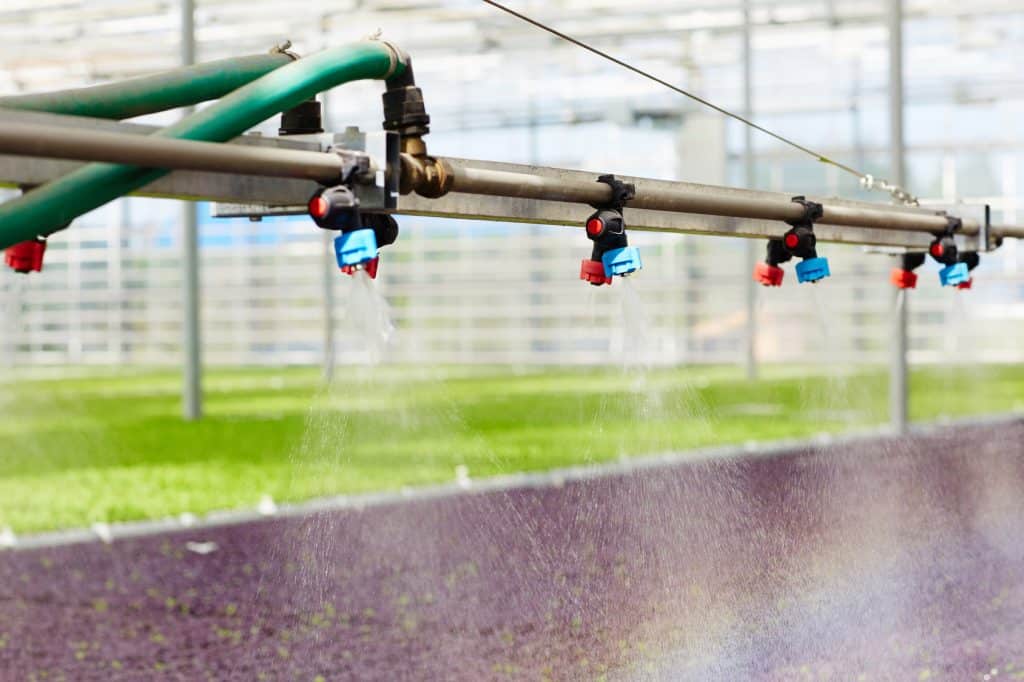
Other types of water management greenhouse equipment you will need are good tubes, water breakers, valves, misters, hoses, sprinklers and boilers for regulating temperatures.
Remember that you will have to find place in your greenhouse, garage, shed, or yard to store these items.
Greenhouse lighting
The lighting system inside a greenhouse determines the level of sunlight, artificial light and shade for the plants. You might need to consider artificial lighting if the sunlight in your area is not strong enough.
To facilitate adequate lighting, you may have to buy:
- Grow lights
- Seedling lights
- LEDs
- General all-purpose lighting
- High-intensity lights
While having an extensive lighting system may be expensive for small greenhouses, for larger ones, it is sometimes essential, at least during certain times of the year.
If you have plants with high-light needs, you will want to consider plant lights.
However, if you choose a portable greenhouse, you can move it for optimum sun depending on your hardiness zone and the season.
You may not need special greenhouse lighting right away. Instead, you may want to wait to see the amount of light the plants get first. Refer to choosing the best greenhouse lights here.
Climate control and heating greenhouse equipment
It’s important to be able to regulate the temperature inside the greenhouse, especially if you have a more permanent one that you can’t easily move. There is greenhouse equipment designed to control the temperature as well as humidity, air and heat inside the greenhouse.
Here are the main components of a climate control system:
Greenhouse thermometers
Maintaining the right temperature is important. Install a thermometer that registers maximum and minimum temperatures with a needle position that appears when the mercury retracts.
When it comes to thermometers for greenhouses, you’ll need one that can be reset with a magnet.
There are more high-end options that have push-button readjustments, but they are not necessary.
Thermometers are needed for all types of greenhouses, even small and portable ones. Also, consider a soil thermometer to gauge the temperature of the soil.
Greenhouse thermostat
A greenhouse thermostat enables you to know the prevailing temperature in your greenhouse and regulate it accordingly.
A temperature gauge or thermometer indicates the temperature changes while a thermostat automatically controls the temperature in the desired area. Ideally, a good greenhouse should have a thermostat.
Greenhouse heaters
Other important greenhouse equipment deals with managing the heat inside the greenhouse. Greenhouse heaters are necessary to control the temperature in a greenhouse. They come in various materials, with different modes and energy sources.
You can select from electric, gas and propane heaters according to your needs and requirements. You also have the option of either selecting a vented or non-vented heater.
Greenhouse humidistat
Greenhouse humidifiers or a humidistat are necessary to control the amount of moisture in the greenhouse. Some plants are susceptible to dry air, which will hamper their vegetative growth. This problem can easily be solved with the help of an effective humidistat.
Ventilation equipment
Proper ventilation is compulsory for proper plant growth, not just during certain seasons, but all year round. This is because, at any time of the year, the sun is capable of causing extreme shifts of temperature.
A good rule is to have open venting options equal to about 20% of the floor area. Vents may be located on the roof and sides of the structure, as well as included as part of the door. Roof venting is valued as the absolute best when coming to fixing vent systems.
Many automatic venting systems are ideal options for those who are not around to manage the greenhouse all throughout the day.
Exhaust fans are another possibility for venting excess air, though whether or not they are a wise choice for any situation, in particular, deserves research.
Pest control equipment
No list of greenhouse equipment would be complete without items for pest control. There are various methodologies for effective pest control. There are some that use chemicals and others that use biology.
Chemicals are easy to use and fairly inexpensive, but some would argue that they do more harm than good.
Natural methods, such as using what are commonly called “beneficial insects” are another form of fighting pests.
They essentially hunt down and eat the bugs that ruin your garden. Sometimes, all the plant needs is a good mesh to keep pests outside. Such meshes can be of metal, cloth or thin plastic.
You might also need fencing and door sweeps to keep insects out of specific areas. Insecticides and pesticides should be used sparingly, with the first preference going to organic or natural sprays to prevent pests from attacking crops.
The good thing about gardening in a greenhouse is that you should have less insects and critters overall.
Greenhouse equipment and accessories
Soil sterilizers
Whatever soil you are considering using for potting your plants, it would be incredibly useful to have a soil sterilizer. There are many ways to sterilize soil, but the best and most efficient one is by installing a steam sterilization system.
Steam systems are very useful and affordable. They won’t take up very much room and do a great job on your soil.
Gardening sieve – sowing sieve
The texture of the soil is an important element to consider when planting your little baby plants. A sowing sieve will be very helpful in helping you achieve your desired texture. A mesh sieve can be used to lightly cover your seeds with compost after you’ve planted them.
The good news is you don’t necessarily need to buy a sieve. This piece of greenhouse equipment can be a DIY project.
Use a small wooden box like the ones you buy bulk fruits in. Take out the bottom of the box and place a piece of perforated zinc in there, and voila — you have your very own sieve! You can delegate this simple activity to your kids and family too.
Plant support equipment
To ensure your plants grow in strength and length, you’ll need to provide adequate support for them. Sometimes, all you need to do is tie up the plants together so that they support each other.
While there are many materials used for tying your plants, we suggest raffia as it is reasonably priced and can support most plants.
Gardening hack: Soak the raffia in water for a few hours before using it. This makes it pliable and it won’t split or break when tying strong knots.
You will also be safe with fillis, a soft twine that comes in many types. Split rings, green gardening twine and paper-covered wires are also used by many greenhouse growers. You can also use fencing and greenhouse molds to shape plants into desired forms.
Where to buy greenhouse accessories and supplies
Many individuals are now taking up greenhouse gardening as a hobby. As they try to achieve their gardening goals, they need to improve their skills by getting necessary gardening accessories and supplies.
However, lots of gardening supplies can be expensive. Buying from places that sell wholesale garden supplies can lower costs.
You can also get discounted greenhouse accessories and supplies off season. There are plenty of ways to discover discounted greenhouse supplies and suppliers.
Buying greenhouse equipment and accessories from wholesalers vs retailers
Many wholesale greenhouse supplies are available through local suppliers and farm organizations. Because lots of large companies buy their items in bulk, these products often have deals on greenhouse gardening supplies.
Also, most of these firms employ individuals who are experts in this gardening field. This can prove to be a reliable resource for a beginner gardener.
Large greenhouse gardening chains often sell wholesale supplies. Again, because they typically buy in bulk, they are ready to offer good deals.
They also generally have annual greenhouse accessories sales that can further boost your savings. The prices of suppliers or wholesalers are cheaper compared to retail prices.
Also, purchasing wholesale greenhouse accessories from wholesalers gives you better quality products with a wider range of specifications available.
Consequently, you can discover various greenhouse suppliers in local directories and other online sites dedicated for wholesale items. Some of the most common greenhouse accessories offered in wholesale rates are moss, hooks, liners, brackets and iron frame containers.
There are also numerous other items sold in bulk like plant markers, fertilizers, supports, watering cans and moisture retention items.
Other common greenhouse accessories include compost buckets, plant stands, sharpeners, pruners, pot feet and decorative supplies. You will also need to find places that sell gloves, soil and shovels for your gardening pursuits.
Propane Generator Basic Information and Buying Guide
Going green with greenhouse accessories
Putting together a greenhouse kit and growing plants can be a real pleasure for the soul. Great watering systems, sterile soil and the right types of planters are just a few things you’ll need for an optimal greenhouse.
When making your equipment purchase decisions, consider the following so that your choices can be more environment-friendly.
Environmentally-friendly greenhouse accessories
It’s tempting to start ordering greenhouse accessories online. But first, consider what you need and what you will use. You can start small and add on as you learn more.
Some ways to choose eco-friendly greenhouse accessories are to:
- Use biodegradable pots. Plant starter peat pots are biodegradable.
- Reuse existing pots and old furniture as greenhouse equipment and supplies.
- Choose organic, non-GMO seeds and starts.
- Use natural fertilizers and pest control methods over chemicals.
- Using jute, cloth and woolen strings to hold up plants or provide shade saves money and unnecessary purchase of harmful plastic or resin.
- Install a water system that collects excess run-off and re-incorporates it into the water table.
- Save time, energy and fuel spent on multiple trips by purchasing a single greenhouse kit.
- You can also consider renting the greenhouse supplies you can’t afford to buy if you own miniature or medium-sized greenhouses.
Growing plants is a green activity. You can keep your greenhouse as green as possible to by choosing earth-friendly accessories and equipment.
Best greenhouse accessories
In order to be able to produce high quality, year-round plants and crops, you will need to know what type of greenhouse equipment and accessories to buy. As indoor growing is becoming a standard practice for growers across the globe, your greenhouse equipment and accessories will need to fit into small spaces and mini greenhouses.
Greenhouses and their accessories
One of the essential features of an efficient greenhouse design is having the right accessories to facilitate growing crops. More on our top hacks for greenhouse design.
Growing plants in greenhouses has become a sustainable and fruitful hobby. Greenhouse equipment should be eco-friendly and cost-effective for the benefit of the owner and the environment.
Greenhouse equipment includes categories such as:
- Potting
- Furniture
- Climate control
- Irrigation systems
- Fertilizer
- Pest control
- Shade cloths
- Smaller accessories: gloves, shovels, and tools
Items for medium-to-large size greenhouses often include:
- Exhaust fans
- Irrigation systems
- Thermostats
- Heaters
Adequate shelving and storage areas are necessary. This will help to keep greenhouse equipment safe and secure.
Reusing home items like garden benches and kitchen containers as pots can help save money on equipment.

